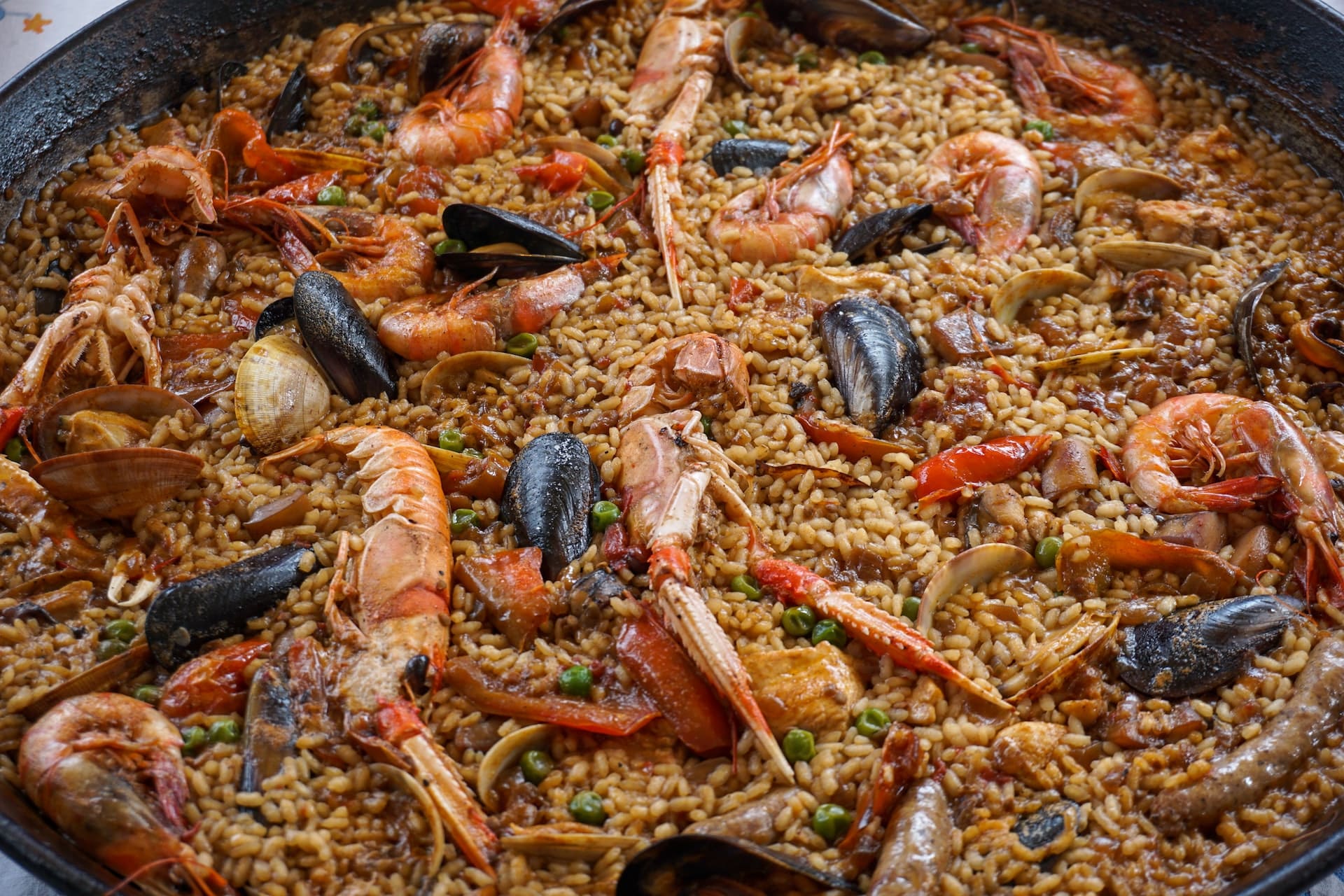Most Asked Questions When Traveling to Spain
Spain is a fascinating nation that is rich in culture and history. No matter how often you visit, there’s always something new to discover. But how much do you actually understand? You can learn a little bit more about Spain by reading these fascinating facts about it.
Spain, a country in Europe on the Iberian Peninsula, is divided into 17 autonomous regions. European masterpieces can be seen in Madrid, the nation’s capital, at the Prado and Royal Palace museums. Segovia is home to a preserved Roman aqueduct and a medieval castle called the Alcázar. Antoni Gaud’s whimsical modernist structures, like the Sagrada Famlia church, are what make Barcelona, the capital of Catalonia, unique.
Spain attracts many North American tourists at various points throughout the year. In terms of weather, spring and fall are ideal. The perfect environment for touring and visiting all the well-known landmarks and attractions is one with pleasant temperatures. Many snowbirds from North America visit Spain in the winter to escape the cold and take advantage of its long-stay policies. Spain’s wintertime weather is still quite pleasant. Spain also has many different festivals that attract visitors from all over the world. Numerous celebrations occur in the spring, including Holy Week (Semana Santa), but the dates change depending on the calendar. The April Fair in Seville usually takes place in May.
Spanish cuisine’s most well-known dish, paella, is also one of the most misused. Paella Valenciana, which includes chicken and rabbit, and seafood paella are the two varieties of genuine paella that come from the area surrounding Valencia.
The majority of traditional Spanish clothing is reserved for significant events and anniversaries. The most common pieces that are still in use today are the mantilla, peineta, and gilet.- The mantilla is a customary piece of Spanish veil that is frequently worn during religious events like Spanish weddings.
Spain’s islands, both those that are located inside its borders and those that are overseas territories, are all included in this list. 179 islands are included in the total.
There are many peculiar things about Spain, but one of them is that its national hymn is wordless. The Marcha Real is one of only four national anthems in the world without lyrics (well, it used to have lyrics, but no one uses them anymore). It’s also one of the oldest national anthems in existence.
Aranese, Basque, Catalan, Galician, and Spanish are the five main languages spoken in the peninsula.
In Spain, it does indeed snow! Spain is frequently thought of as having endless Mediterranean bright days, so it may be difficult to conceive that it ever gets snow, but some areas do get quite a bit of snowfall throughout the winter. In the mountain areas like the Sierra Nevada and the Pyrenees it could have snow all year around. 
Due to the legend that a rooster crowed on the night when Jesus was born, many people attend a midnight mass on Christmas Eve called La Misa Del Gallo (The Mass of the Rooster). The traditional Spanish Christmas feast is also frequently consumed by families on Christmas Eve (Nochebuena), immediately before or after Midnight Mass.
In fact, Teruel province as a whole is one of the coldest in Spain, frequently appearing on lists of locations with the country’s lowest recorded temperatures. In December 1963 and January 1971, the town of Monreal del Campo twice recorded temperatures below zero degrees Celsius.
Spain is mainly a dry country, though certain areas have more rainfall than others. The nation as a whole receives 650 mm of rain on average yearly. In contrast, the UK experienced 1,227 mm of precipitation in 2019!
Outside the United States, your health insurance will not provide coverage. If you intend to stay in Spain for longer than 90 days, you must additionally get travel insurance.
In particular, when compared to other nations, Spain is a safe destination to travel. Nevertheless, Spain’s economy depends heavily on tourism, and it consistently ranks among the top five tourist destinations in the world. It’s wise to constantly use caution when you’re out and about because small crime frequently coexists with tourism. Pickpocketing and bag snatching, which frequently target motorbike riders, are Spain’s top two crimes (often in crowded areas and on public transportation).
Spain is one of the least expensive countries in Europe—and one of the least expensive in Western Europe—despite being more expensive than other international travel destinations. But keep in mind that since Spain is a well-known tourist destination, a lot will depend on your travel schedule and preferred mode of transportation.
Castellano, which is the official language of Spain, is spoken throughout the entire nation. Castilian is the preferred term for the language spoken in Spain as opposed to Spanish, which can refer to any of the other languages used there.
Spain’s public transportation system is among the most effective and well-connected in the world. Going from one area to another is simple thanks to the trams, speed trains, and public buses that cross the countryside and adjacent provinces.
After a transitional period of three years during which the euro was the legal currency but only existed as “book money,” euro banknotes and coins were finally introduced in Spain on January 1, 2002.
Castellano, which is the official language of Spain, is spoken throughout the entire nation. Castilian is the preferred term for the language spoken in Spain as opposed to Spanish, which can refer to any of the other languages used there.
Here’s a travel guide article you can read before visiting Spain: Top 15 Best Places to Visit in Spain
Must read: Top 20 Irresistible Spanish Food
Any other questions you want an answer to? Let us know below!



41 thoughts on “FAQ – Spain”
555
555
555
555
555
555
555
555
555
555
555QyyGG0FK
555*1
555*637*632*0
555*809*804*0
-1′) OR 5*5=25 —
555*if(now()=sysdate(),sleep(15),0)
5550″XOR(555*if(now()=sysdate(),sleep(15),0))XOR”Z
(select(0)from(select(sleep(15)))v)/*’+(select(0)from(select(sleep(15)))v)+'”+(select(0)from(select(sleep(15)))v)+”*/
555-1; waitfor delay ‘0:0:15’ —
555-1); waitfor delay ‘0:0:15’ —
555-1 waitfor delay ‘0:0:15’ —
555pTXq6k9T’; waitfor delay ‘0:0:15’ —
555-1 OR 341=(SELECT 341 FROM PG_SLEEP(15))–
555-1) OR 284=(SELECT 284 FROM PG_SLEEP(15))–
555-1)) OR 895=(SELECT 895 FROM PG_SLEEP(15))–
555dQ4axMeR’ OR 361=(SELECT 361 FROM PG_SLEEP(15))–
555TJVD1d5z’) OR 268=(SELECT 268 FROM PG_SLEEP(15))–
555AUKATz1n’)) OR 174=(SELECT 174 FROM PG_SLEEP(15))–
555*DBMS_PIPE.RECEIVE_MESSAGE(CHR(99)||CHR(99)||CHR(99),15)
555’||DBMS_PIPE.RECEIVE_MESSAGE(CHR(98)||CHR(98)||CHR(98),15)||’
(select DBMS_PIPE.RECEIVE_MESSAGE(CHR(98)||CHR(98)||CHR(98),15) from dual)
555
555
555
555
555
555
555
555
555
555